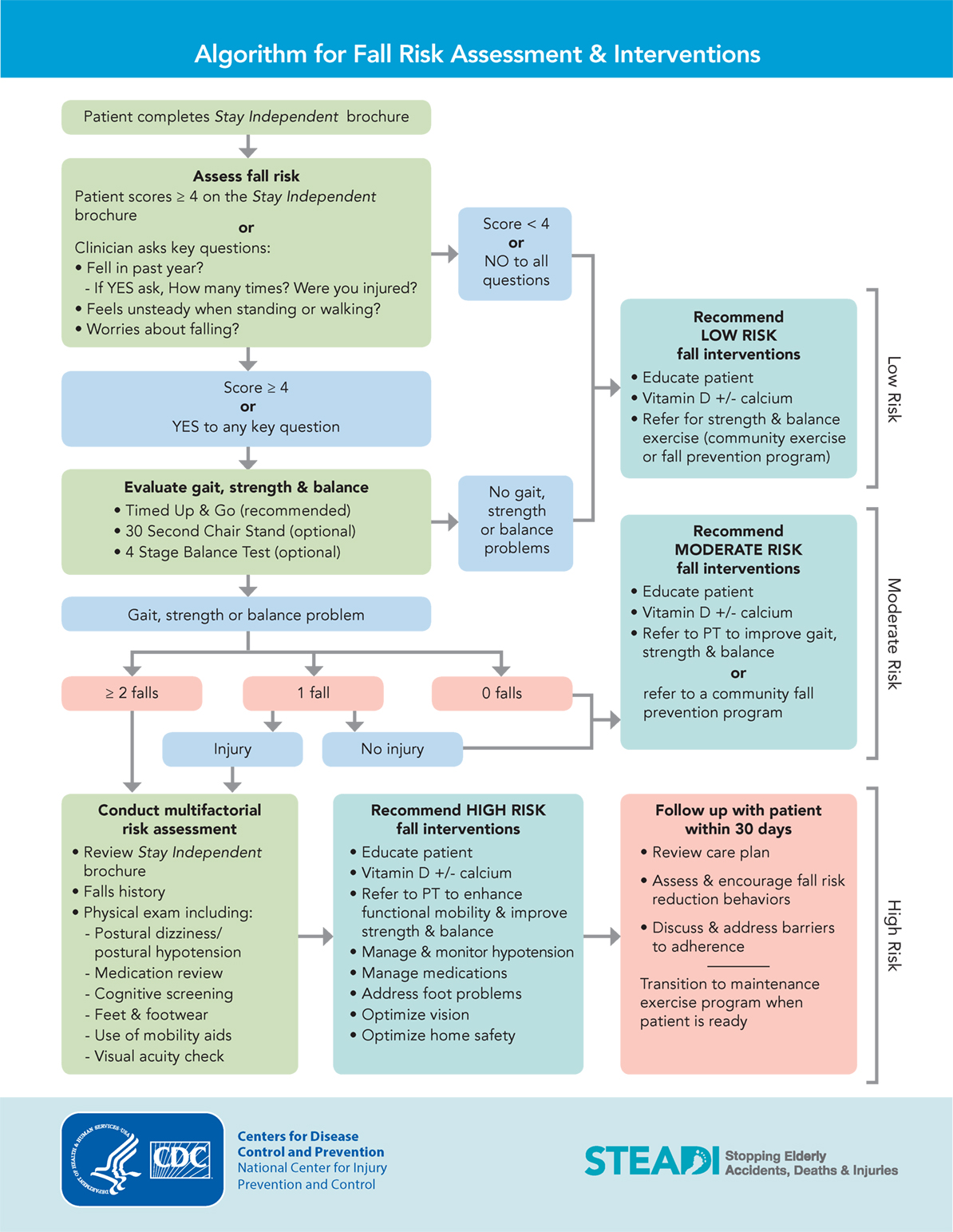Dementia Fall Risk - Truths
Table of ContentsRumored Buzz on Dementia Fall RiskMore About Dementia Fall RiskThe Buzz on Dementia Fall RiskNot known Factual Statements About Dementia Fall Risk Examine This Report on Dementia Fall Risk
The FRAT has three sections: fall risk standing, risk aspect checklist, and activity strategy. A Fall Threat Condition includes data regarding history of recent drops, drugs, mental and cognitive condition of the individual - Dementia Fall Risk.If the patient scores on a threat factor, the equivalent variety of factors are counted to the client's loss threat score in the box to the much best. If a person's fall danger score amounts to five or greater, the person is at high threat for falls. If the client ratings only four points or reduced, they are still at some risk of dropping, and the registered nurse ought to use their best scientific assessment to manage all loss risk factors as component of a holistic treatment strategy.
These conventional techniques, in general, help develop a risk-free atmosphere that lowers unexpected falls and delineates core preventative procedures for all individuals. Indications are important for people at risk for falls.
Dementia Fall Risk - Truths
Wristbands ought to consist of the person's last and first name, day of birth, and NHS number in the UK. Only red color must be utilized to signal special individual status.
Things that are too far might need the individual to get to out or ambulate unnecessarily and can possibly be a hazard or add to falls. Aids stop the individual from going out of bed without any type of aid. Nurses react to fallers' telephone call lights faster than they do to lights launched by non-fallers.
Visual impairment can greatly trigger drops. Keeping the beds closer to the flooring minimizes the risk of drops and major injury. Putting the cushion on the flooring dramatically reduces fall risk in some health care setups.
The Best Strategy To Use For Dementia Fall Risk
People that are high and with weak leg muscle mass that attempt to rest on the bed from a standing position are most likely to drop onto the bed because it's too low for them to lower themselves securely. If a tall person attempts to get up from a low bed without assistance, the person is most likely to drop back down onto the bed or miss out on the bed and drop onto the flooring.
They're developed Dementia Fall Risk to advertise timely rescue, not to protect against drops from bed. Aside from bed alarm systems, increased supervision for risky patients additionally may help protect against falls.

Individuals with an evasion stride boost autumn chances substantially. To lower loss danger, shoes need to be with a little to no heel, slim soles with slip-resistant walk, and support the ankle joints.
The Ultimate Guide To Dementia Fall Risk
Patients, particularly older grownups, have decreased visual ability. Lights a strange environment aids raise visibility if the person have to get up during the night. In a research study, homes with ample illumination record less drops (Ramulu et al., 2021). Renovation in illumination in your home may minimize loss prices in older grownups (Dementia Fall Risk). The use of gait belts by all wellness care service providers can advertise security when aiding official site people with transfers from bed to chair.

Sitters work for assuring a safe, safeguarded, and secure environment. Nevertheless, research studies showed really low-certainty evidence that sitters decrease loss risk in acute care health centers and just moderate-certainty that options like video tracking can decrease caretaker use without boosting autumn risk, suggesting that caretakers are not as beneficial as at first thought (Greely et al., 2020).
All about Dementia Fall Risk

Enhanced physical conditioning decreases the risk for drops and limits injury that is endured when autumn takes place. Land and water-based workout programs may be similarly advantageous on balance and gait and thus lower the risk for drops. Water exercise might add a positive benefit on equilibrium and stride for females 65 years and older.
Chair Surge Workout is a basic sit-to-stand exercise that aids strengthen the muscular tissues in the upper legs and butts and boosts wheelchair and freedom. The objective is to do Chair Surge exercises without using hands as the client ends up being more powerful. See sources area for a comprehensive direction on how to perform Chair Increase exercise.